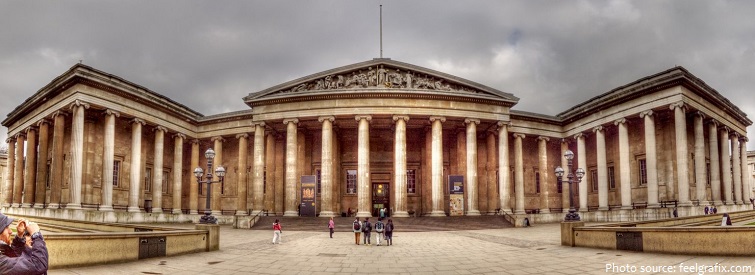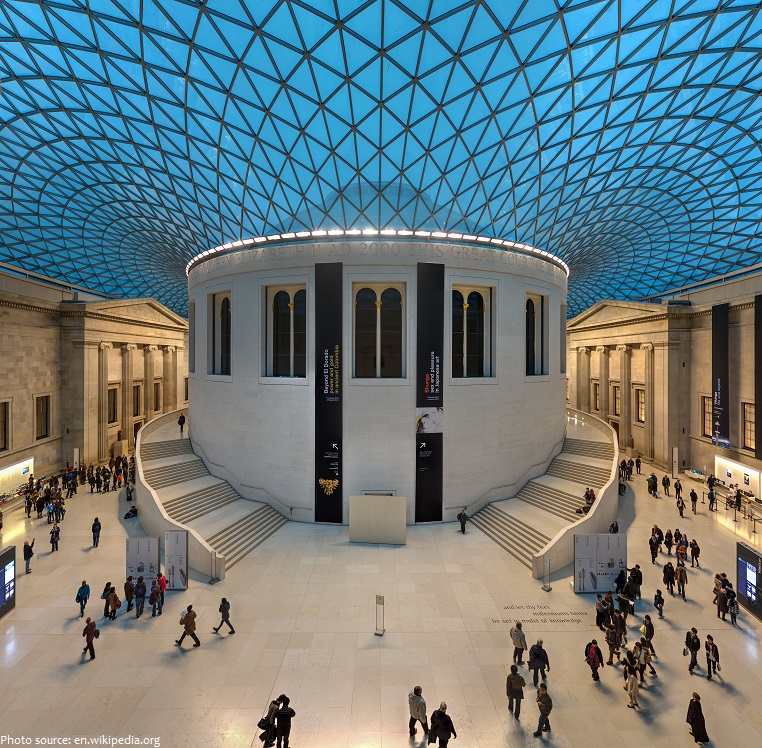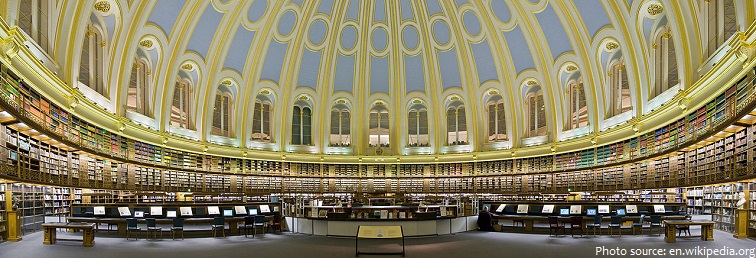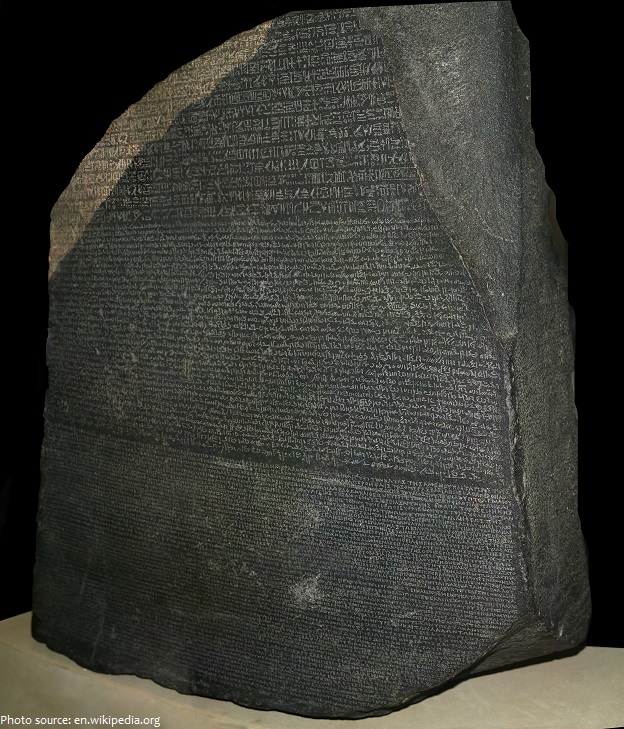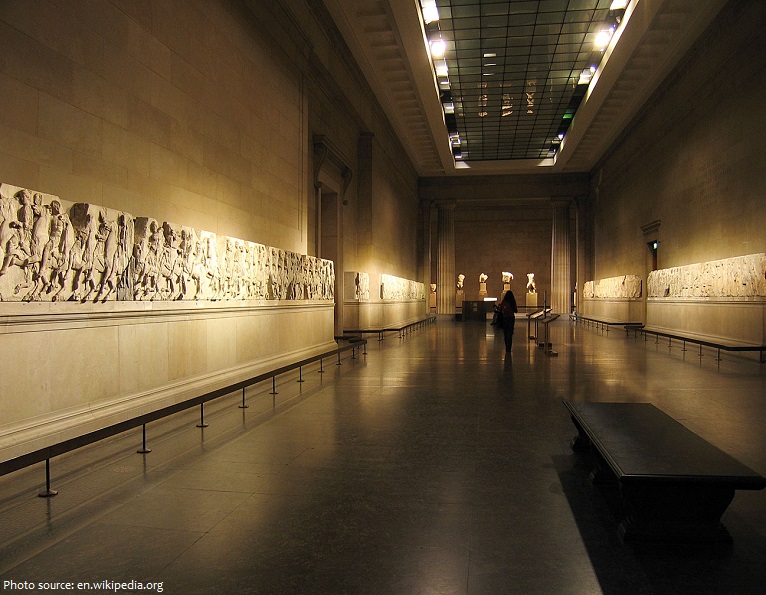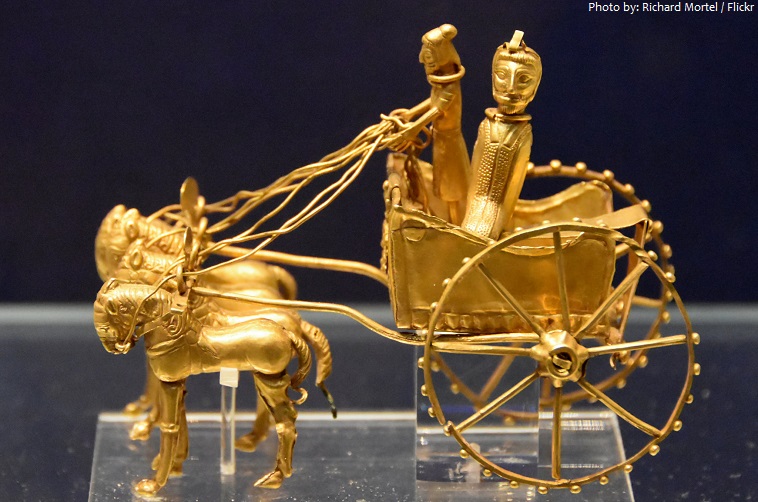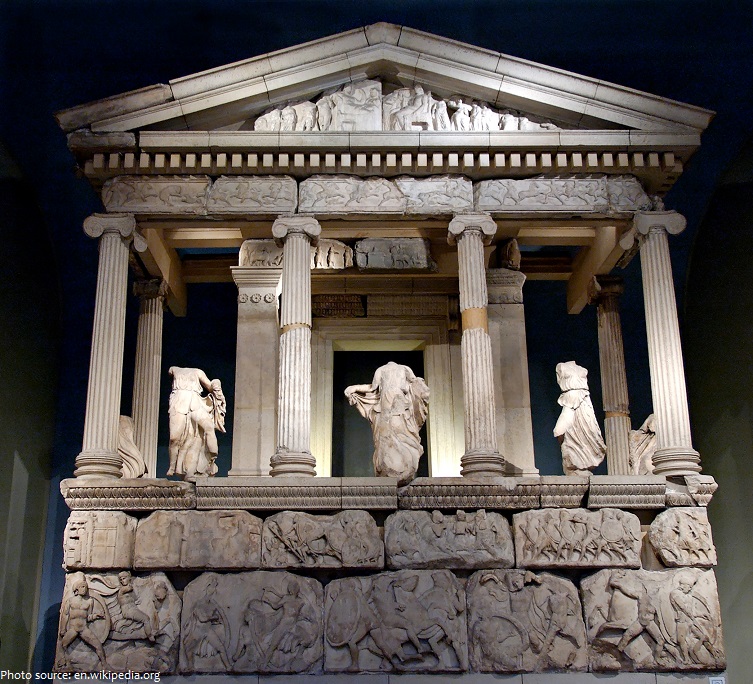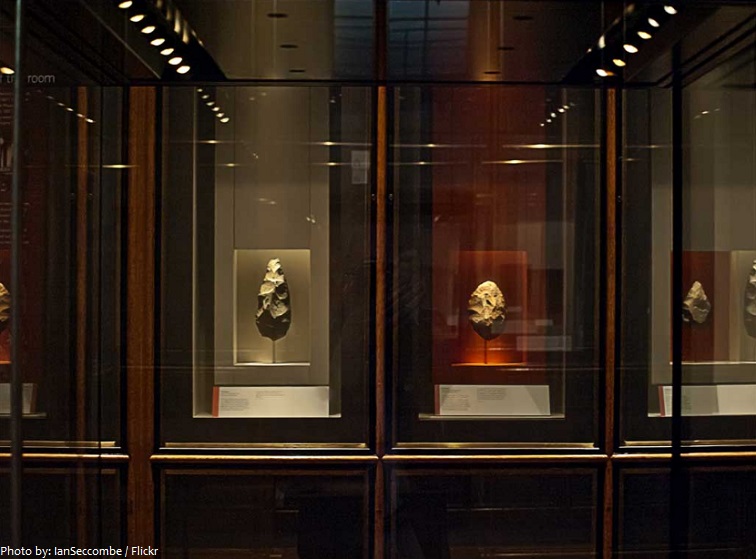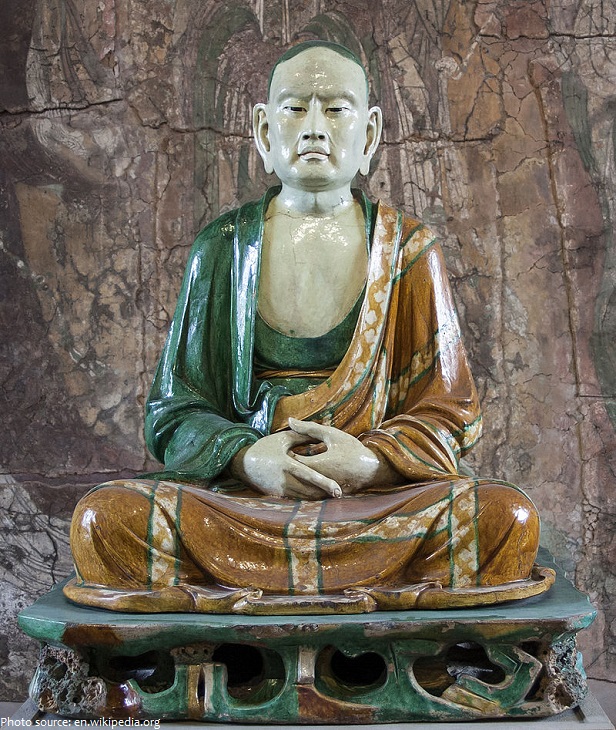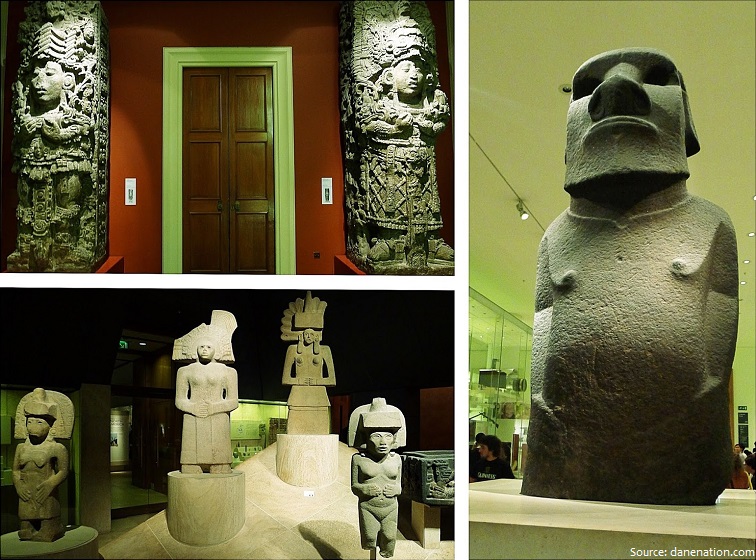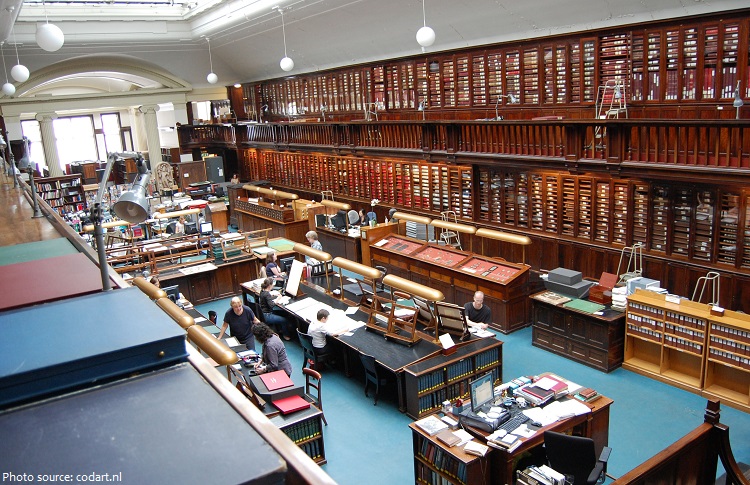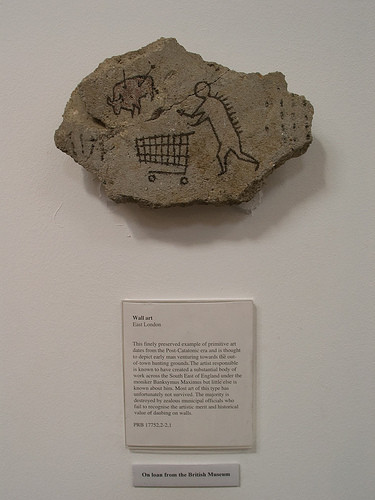The British Museum is dedicated to human history, art and culture, and is located in the Bloomsbury area of London.
The Museum houses a vast collection of world art and artefacts and is free to all visitors.
The British Museum collection today contains over 8 million objects. Only 1%, or 80,000 of these objects are on display at any given time in 194 designated store rooms.
The British Museum was established in 1753, largely based on the collections of the physician and scientist Sir Hans Sloane.
It was the first national public museum in the world.
The museum first opened to the public on 15 January 1759, in Montagu House, on the site of the current building.
Visitor numbers have grown from around 5,000 a year in the eighteenth century to nearly 7 million today. It is the second most visited art museum in the world, after the Louvre.
The core of today’s building, the four main wings of the British Museum, was designed in the 19th century by the architect Sir Robert Smirke (1780–1867).
The Greek Revival façade facing Great Russell Street is a characteristic building of Sir Robert Smirke, with 44 columns in the Ionic order 14 meters (45 feet) high, closely based on those of the temple of Athena Polias at Priene in Asia Minor.
The British Museum has grown to become one of the largest museums in the world, covering an area of over 92,000 meters square (990,000 square feet).
Designed by Foster and Partners, the Queen Elizabeth II Great Court, commonly referred to simply as the Great Court transformed the Museum’s inner courtyard into the largest covered public square in Europe. It is a 8,000 square meter (2 acres) space enclosed by a spectacular glass roof with the world-famous Reading Room at its center.
The British Museum Reading Room used to be the main reading room of the British Library. In 1997, this function moved to the new British Library building at St Pancras, London, but the Reading Room remains in its original form at the British Museum.
Some of the museum’s most popular and important exhibits include the Rosetta Stone, the Elgin Marbles, the Oxus Treasure.
The Rosetta Stone is a stone with writing carved into it. French soldiers found it in Egypt in 1799. It helped people get a better understanding of the Ancient Egyptian writing system called hieroglyphics. Its discovery led to the translation of Ancient Egyptian writing. The stone is named after the city where it was found, Rosetta.
The Elgin Marbles, also known as the Parthenon Marbles, are a series of ancient Greek sculptures made from marble. They were originally part of the Parthenon temple in Athens but they were taken away by Thomas Bruce, 7th Earl of Elgin in the early 1800s.
The Oxus treasure is a collection of about 180 surviving pieces of metalwork in gold and silver, the majority rather small, plus perhaps about 200 coins, from the Achaemenid Persian period which were found by the Oxus river about 1877-1880.
Its most important curatorial departments include the following:
• Department of Ancient Egypt and Sudan
• Department of Greece and Rome
• Department of the Middle East
• Department of Prehistory and Europe
• Department of Asia
• Department of Africa, Oceania and the Americas
• Department of Prints and Drawings
The Department of Ancient Egypt and Sudan is one of the biggest collections of Ancient Egyptian art in the world (with over 100,000 pieces). Only the Egyptian Museum in Cairo has a bigger collection. They cover Egyptian and Sudanese history from around 10,000 BC all the way to the 12th century AD, a period of around 12,000 years.
The Department of Greece and Rome is one of the biggest collections of Ancient Greek and Roman
objects in the world. The objects come from nearly 4000 years of European history, from 3200 BC all the way to the 4th century AD.
The Department of the Middle East has the largest collection of Mesopotamian art in the world, outside Iraq. It has some 300,000 objects, covering the Neolithic period until present.
The Department of Prehistory and Europe in the British Museum is responsible for collections that cover a vast expanse of time from the earliest human tools in Africa and Asia two million years ago to the art and archaeology of Europe from the earliest times to the present day, including the history of Britain under Roman occupation.
This department of Asia holds more than 75,000 objects reflecting the culture of the whole Asian continent, from the Neolithic Age to the present day.
The collection of the Department of Africa, Oceania and the Americas includes around 350,000 objects, representing the cultures of the indigenous peoples of four continents.
The Department of Prints and Drawings houses the national collection of printmaking and drawing, containing some 50,000 drawings and 2 million prints, which makes it one of the top collections in the world. It features chalk drawings by Raphael, Leonardo da Vinci, Michelangelo, Rubens, and Rembrandt, among many others. The holdings are easily accessible to the general public in the Study Room [photo below], unlike many such collections.
The Egyptian Book Of The Dead went on display at the British Museum in 2010. Containing a collection of ‘spells’ thought to guide the dead through the dangers of the afterlife, the collection is over 3,000 years old.
An erotic Japanese art exhibition was once dubbed raunchier than Page 3 by Sun editor David Dinsmore. The controversial collection had 87,893 visitors in three months and is one of the most successful in the museum’s history.
In 2005, British street artist Banksy actually fooled museum staff into displaying a supposed cave painting of an early human pushing a shopping cart. Entitled “Early Man Goes to Market”, Bansky’s piece was displayed in the gallery for Roman Britain artefacts. It was only up for a couple of days before the museum caught on and removed it.
In 2004, a thief was believed to have walked out of the museum with earrings, fingernail guards, and other pieces of jewelry which dated back to 700 A.D. A marble head was stolen from the Greek gallery in 2002.

